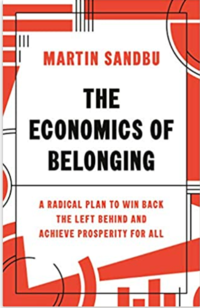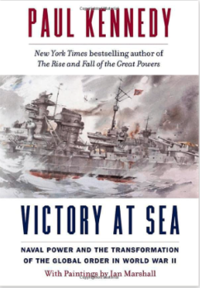OFF THE SHELF: JULY 2022

OFF THE SHELF: JULY 2022
Eighteenth century Italy's most famous man, post-pandemic economics, the naval history of WW2, and more
Published: 1 July 2022
Author: Richard Lofthouse
Share this article

The Incomparable Monsignor: Francesco Bianchini’s world of science, history, and court intrigue by J L Heilbron (Oxford University Press, June 2022)
The author is an Honorary Fellow of Worcester College as well as Professor Emeritus of History and Vice Chancellor Emeritus, University of California, Berkeley. He’s also the master of Italian history and wisely brings it to a narrative form here through one life, albeit a singing and dancing life pointing in a million directions, of Francesco Bianchini.
Bianchini is not a household name, I suspect partly because the European Enlightenment remains a principally French and German affair in the courses that are taught to undergraduates, while Italy is collared as the author of the Renaissance, through painting.
Of course, this is a terrible nonsense, or at least a vulgar simplification.
Some of the intellectual projects encountered here were oddities and long forgotten, like creating a map of non-existent features on the invisible surface of Venus.
But they were all pointing in the right direction and by validating Newton while keeping the Papacy on side, Bianchini rolled the wheel of learning forwards while being made a Fellow of the Royal Society.
Bianchini was the universal man of learning and a quintessential polymath, while also worldly in diplomacy.
His accomplishments included: writing a universal history from the creation to the fall of Assyria; recovering ancient calendars; discovering, excavating, and interpreting ancient buildings; designing a papal collection of antiquities later partially realised in the Vatican museums; undertaking a geodetic mapping of the papal states; confirming and publicising Newton’s theories of light and colour; discovering several comets and a few variable stars; building the most beautiful astronomical instrument, and the most exact solar observatory in the world.
As a trusted servant of Pope Clement XI, he ended up supporting the Old Pretender, James III, the Stuart claimant to the throne of England, Scotland, and Ireland.
Engaging and highly-readable, this is a lively history of not only an extraordinary individual but
also a slice of the science, art, and courtly intrigue of the earth 18th century.

The Economics of Belonging by Martin Sandbu, (Princeton University Press, July 2022)
Martin Sandbu (Balliol, 1995) is the victim of history but productively so. A journalist at the Financial Times, his book was completed on the eve of the Pandemic. In a fresh Preface to this paperback, he notes first that everything he said then about Brexit and Trump and their deeper historical context, has got worse. Manual workers were more exposed to COVID-19 and its negative economic impacts than their white collar, desk bound counterparts, while huge government fiscal stimulus resulted in asset price inflation, which is handy if you have assets (i.e. the rich and the very rich more so). So inequality has become worse.
On the other side of the ledger, he is delighted that his ‘don’t be timid with economic stimulus’ message, originally rooted in admiration for Roosevelt’s New Deal launched in 1933, has been partly realised as a result of the Pandemic, a crisis which caused the UK’s conservative government to behave in a very non-Conservative way, having a big spend up – to name but one example.
But even the new Preface is out of date. It was penned in October 2020 when the sun shone strongly behind still-black but receding COVID clouds. Now as the book hits the shelves in July 2022, it reads ironically.
‘For example, the results of Bidenomics will show us whether extraordinarily high demand pressure only leads to inflation or can be expected (as chapters 4 and 8 argue it can) to trigger a supply-side response of higher productivity, so that growth accelerates and price pressures abate.’
Well we already know how that one ends. Inflation is raging and recession is about to swallow both sides of the Atlantic.
He also makes a fateful reference to higher wages ‘spur[ing] business to invest in capital and better work methods to make scarce labour more productive (see chapter 6).’
The jury is always out on a statement like that but when you study the detail of the currently crippling rail strike in the UK, happening while this was written, it is painfully evident that economists are still stuck in theories that don’t capture behavioural realities. Ask the RMT.
What’s great about the book is that it brilliantly articulates how whole sections of society came to feel that they had been left behind, threatening the liberal democratic model at its core.
As a thesis, it is worth studying for this. He ends the new Preface, pre-Ukraine war, ‘I hope I can conclude that the book remains as relevant today as two years ago- or, to the extent it is now kicking in open doors, that this is an acceptable kind of irrelevance.’
It’s better than ‘acceptably irrelevant’. It may even be catastrophically wrong - but that is a strong reason to read the book, and we need to be honest with ourselves at an individual level: what would we do if we were in charge?

Victory at Sea: Naval Power and the Transformation of the Global Order in World War II by Paul Kennedy, with paintings by Ian Marshall
Given how rapidly the world is changing right now, it feels almost like an inter- generational effort to go back to World War Two yet again; has the tale not been told enough, by now?
If any single volume can muster a hearty ‘No!’ to that question it must be this one.
Paul Kennedy (St Antony’s, 1970), long an acclaimed and famous professor of history and strategic studies at Yale University, established his trademark style for lucid, deceptively easy to read analysis of massive subjects when he published The Rise and Fall of British Naval Mastery in 1976. The book remains masterly even now, and as a single volume might be all you ever need if you wanted to grasp the subject of the title.
What we have here is the same approach to the entire theatre of World War Two, and thus six navies in particular: United States, Great Britain, Japan, France, Italy and Germany.
The span of time is 1936-46, and during that time the entire world order changed swiftly and irrevocably, with America emerging as the ultimate victor.
What we also have are simply superb paintings by the late Ian Marshall. Far from being merely aesthetic they seize on both ordinary and pivotal moments to bring a lump to your throat, in particular (for this reviewer) the double page spread depicting a US submarine, USS Archer, stalking Japanese super-carrier Shinano, in Honshu in 1944.
A famous moment in US naval history, the watercolour medium perfectly captures the watery stain that depicts a hulking killer, almost invisible but not quite. It would subsequently launch six torpedoes. The 72,000-ton carrier would sink within a few hours, the largest ship ever to be sunk by a submarine at the time.
By bringing visual acuity to these moments – and Yale University Press have put on a lavish spread - the panoply of the subject is brought to life in a most extraordinary and original manner.
All said and done, the narrative goes like this. In 1939 on the eve of the war, the allied powers had enormous dominance of surface warships, with 37 capital ships to the Axis powers’ 18. The only vessel-type where this wasn’t the case was submarines.
By the Spring of 1942 the allies were in dire straits, having suffered huge damage in all the main theatres of the conflict, the Atlantic, the Mediterranean and the Pacific.
But America got its entire economy whizzing – Churchill called it ‘that gigantic boiler’ – so it could despatch a new aircraft carrier almost monthly at the height.
And brilliant men and woman did the rest, Kennedy very careful to weigh the materiel against the actual and real role of individual humans.
What we have here is the Naval history equivalent of Fernand Braudel’s two volume history of the Mediterranean in the age of Philip II; Braudel referenced towards the end and of course himself caught up in the conflict and interned in a German POW camp.
A wonderful book, and maybe to be complemented soon by someone else’s equivalent analysis of the rise of China as a naval power, the unseen and mostly unnarrated narrative of the past decade.

How We Might Live: At Home With Jane and William Morris by Suzanne Fagence (Quercus Books, 2022, HB)
William Morris - poet, designer, campaigner, hero of the Arts & Crafts movement - was a giant of the Victorian age, and his beautiful creations and provocative philosophies are still with us today: but his wife Jane is too often relegated to a footnote, an artist's model given no history or personality of her own. In truth, Jane and William's personal and creative partnership was the central collaboration of both their lives. The homes they made together - the Red House, Kelmscott Manor and their houses in London - were radical works of art in themselves, and through them they explored how we all might live a life more focused on beauty and fulfilment.
In How We Might Live, published in June, Suzanne Fagence Cooper (Merton, 1988) explores the lives and legacies of Jane and William Morris, finally giving Jane's contribution the attention it deserves and taking us inside two lives of unparalleled creative artistry. Suzanne is an art historian and was a curator at the V&A for twelve years. She is the author of Effie, the biography of Effie Gray.
Off the Shelf typically concerns books where there is an Oxford connection, whether the place, the University or of course the author.
Alumni can claim 15% discount in any Blackwell's store with a My Oxford Card.
Alumni can claim 20% discount at Oxford University Press.
Details about the Oxford Alumni Book Club are at: www.alumni.ox.ac.uk/book-club















